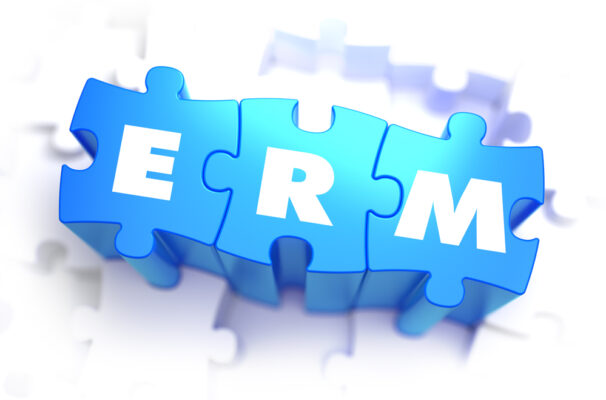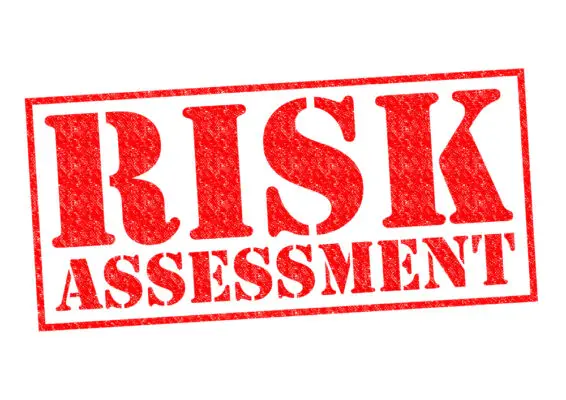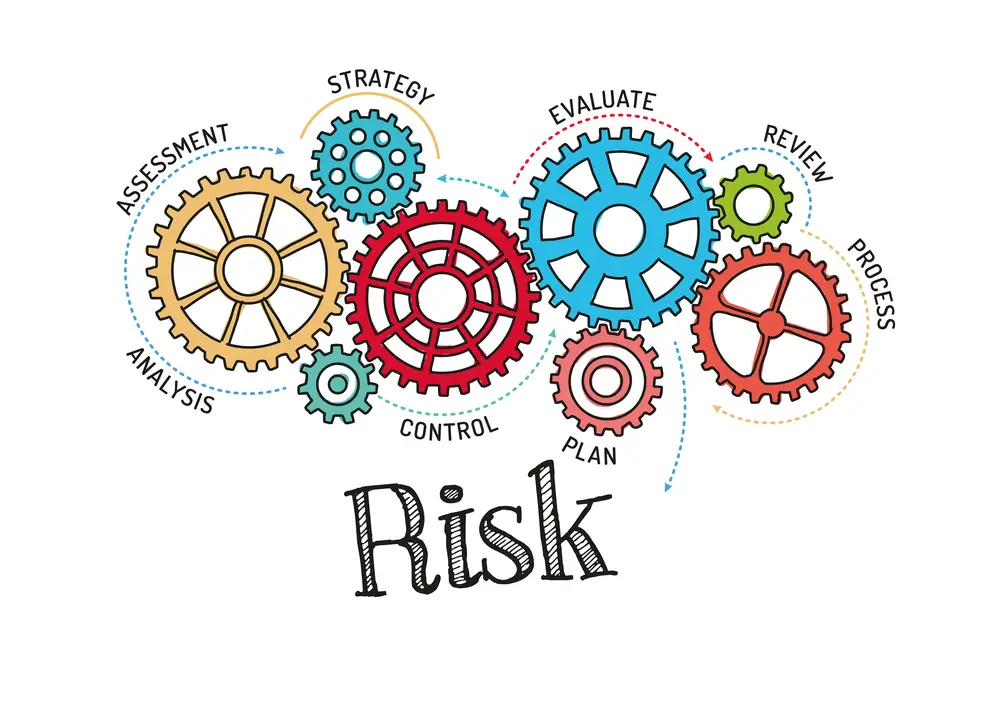The first step in the risk management process is to identify potential risks. This can be done by looking at the company’s assets and liabilities and identifying areas where there may be a potential loss.
Once potential risks have been identified, the next step is to assess the likelihood of those risks occurring and their potential impact on the company. This information can then develop strategies for managing or mitigating those risks. Risk management aims to minimize the negative impact of risks on the company’s operations and bottom line.
Risk identification can be done through various methods, including brainstorming sessions, stakeholder interviews, and reviewing past incidents.
Once potential risks have been identified, they must be assessed to determine their likelihood and potential impact. Finally, control measures must be put in place to mitigate the risks. This may involve developing policies and procedures, training employees, or investing in safety equipment.
Risk management processes are a critical aspect of any business because it is concerned with the security of the entire organizational structure. Among the biggest priorities for risk management for a company were the improvement of quality and availability of risk data in 79% and enhancement of risk information and technologies infrastructure in 64%.
The likelihood of events occurring and the consequences they may cause are impossible. The probability that an event is likely and its impact is another factor in deciding the severity of the risk.
FEMA reports that 45% of businesses do not open up again after disasters. Appriver says 48% say major data breaches could shut down a company permanently. It’s terrifying. But unless you prepare, your life won’t get worse.
A good risk management plan is crucial to keep you on the other end. And there’s not enough stress for a plan like that. It’ll just work out. The risk assessment process does not necessarily require a risk manager or a costly risk assessment consultant.
Risk management is the simplest way of assessing and managing risk. It allows companies to identify risks worth taking or not to improve their bottom line.
A risk management plan is a critical component of any organization, but what is the first step in creating one? In this blog post, we will explore the first step in the risk management process and provide tips on how to get started. Stay tuned for more information on risk management!

What is Risk Management?
Risk management helps organizations understand risk management processes and improve them through effective risk assessment. Risk management has been adopted throughout businesses of all ages; small business is informal while enterprises are codified.
Businesses need stability for growth. Managing risks is essential to maintaining stability. If you don’t know the risks to your company, you may suffer a loss.
Need for Risk Management Process
In today’s world, managing risk is a vital part of any business or organization. The need for an effective risk management process is clear, whether it’s managing the risk of financial loss, reputation damage, or lawsuits. Risk management solution can be offered by the risk management unit,outsourced services and composite risk management.
Risk management is “the process of identifying, analyzing, and responding to risks.” In other words, it’s a way to identify and assess potential risks that could affect your business or organization and then implement plans to mitigate or manage those risks.
Risk management has many different aspects, but some key components include identifying risks, analyzing their impact, developing response plans, and monitoring risks over time. An effective risk management process can help you avoid potential disasters and keep your business or organization running smoothly. Project risk management process also follows the ISO 31000:2018 standard risk management guideliness.
The project manager and team members must learn to manage risks properly and effectively. In other words, the whole enterprise can run its projects more efficiently.

Importance of Risk Management
Prevent Catastrophic losses
Risk management can have significant financial consequences. There is a huge advantage to being a protected company, and there could also be a huge disadvantage if you do nothing to protect them.
You could lose markets simply because you do not know what will happen. If you don’t plan ahead, you risk a financial loss. Moreover, failing to deal with unforeseen situations may further affect your reputation.
Failed or restricted growth
Having Risk Management processes is important for growing your company. Sure, there’ll always be risks if your efforts don’t work out. However, you have a better chance of succeeding if you have identified and assessed risk to improve your confidence in deciding the right route.
Risk Management Process
The five steps of risk management identified below:-
Identifying the risks
A risk management strategy must identify a specific risk to achieve success. This risk can be identified through a manual risk management process, but when an organization implements an internal risk control system, the risk identification procedure is much easier. All collected data is integrated into the system. Similarly, access to these documents is greatly easier since project management teams can request this information without email.
List all the events that will negatively influence you. Depending upon your risk in a given week, you’re probably not sure what the risk is, but you may never consider the risk. Ask other department leaders about risk management. A risk management system can also identify risks. Project manager has a role in risk identification.
The Risk management process identify a collective number of risks. Remember that these are ongoing processes, so there will always be risks. The risk register can be included in the system, or an excel sheet can be used to identify risks. Risk factors, also called causes, will correspond with identified risks.
Analyze the Risk Analysis
Once an issue is identified, the risk is analyzed. The risks should be determined. It also must understand the relationship between risks and various organizational elements. The severity of the risk must be analyzed based on the number of business functions it affects.
There may have been some risks that would cause a total shutdown when actualizing the situation. Still, there might be several risks that would be only a small inconvenience in the analysis. In manual risk management environments, these analyses are manual.
All the organizational risks have been identified at this stage, which will help teams identify these risks. In the risk analysis, the teams estimate the likelihood that the risks will occur and determine their fallout. Companies must consider the following factors when evaluating risks. This also assists in understanding a connection between risk and a range of business issues.
Qualitative Risk Assessment
Risk assessment is qualitative – although risk analysis can be measured if the risk is a given metric, the risk is not quantifiable. Consequently, it is difficult to measure climate change risk, which most of us now focus on.
It must provide an efficient method for conducting qualitative risk assessments and ensure uniformity of assessments across the entire enterprise.
Quantitative risk assessment
Analyzing a quantitative risk assessment is the best way to assess financial risks. These risks are commonly performed across all industries because of a focus on numbers. Quantitative risk assessments are easier to automate than qualitative risk assessments.
Risk Management Evaluation
All businesses that seek maximum effectiveness in risk management need risk management assessments for success. This evaluation helps companies understand the strengths of their business. The risk management team will carry out risk evaluation of analyzed risks for risk management activities. Examples of risk include market risks.
A more detailed evaluation of risk management frameworks gives insight into how to improve these frameworks. This evaluation may be difficult for people to conduct by hand, but risk management tools and techniques can streamline evaluation and assessment processes. A risk assessment should be performed before making changes during a risk review.
The risk is grouped in severity and prioritized after an exhaustive risk assessment. When a firm utilizes a risk management tool, many risk classes in the system categorize the risks by severity. Risk caused by the company’s operations has been deemed “low risk”, while risks affecting operations have been considered very risky. Low risk needs no intervention from management, but large risks require urgent action.
Treating the Risks
After analyzing the risks, a decision should be taken. All organizational or project risks must be discarded and/or controlled. When risk treatment is manually conducted, team members need to call the stakeholders in advance.
Typically these conversations spread across email chains and other documents, making the whole process longer and harder. According to a study released last year, only 44% are equipped with adequate personnel to tackle security threats. So leveraging risk management tools are becoming essential.
A company’s risk assessment should begin at the beginning with developing a strategy and developing the appropriate treatment plan. The risk treatment plan is designed to reduce the likelihood of risk occurrence. When a chance arises, it is aimed at increasing the chance the opportunity can occur. Depending on the risk and the possibility, the response is determined.
Each danger must be eliminated if possible to minimize it. All this happens by contacting experts in this area. This involves contacting everyone and setting up meetings where everyone talks about the issues.
The problems are that this debate is broken into several emails, documents, or spreadsheets. In Risk Management Solutions, all relevant parties can receive system notifications. Discussion of risks and solutions can begin at the system level.
Monitor and Review the Risks
It doesn’t mean that every threat has to be removed — certain risks remain. Several risks exist in the economy. Diligent staff members do automatic monitoring of the system. The professionals should be careful about the risks they encounter.
Risk management systems monitor risk management across organizations across a digital environment. Any change in the factors and risks can instantly reach the public. It is also more efficient to monitor risk using computers and humans. Monitoring risk is important in your company to maintain continuity
Conclusion
The first step in the risk management process is identifying and assessing risks. By understanding what constitutes a risk, you can devise a plan to manage those risks. Risk management is essential for any business, as it helps protect both the company and its employees.
The importance of risk management cannot be overstated, and with the right process in place, your business can thrive despite potential dangers. Have you implemented a risk management process in how many business functions? If not, now is the time to do so!

Chris Ekai is a Risk Management expert with over 10 years of experience in the field. He has a Master’s(MSc) degree in Risk Management from University of Portsmouth and is a CPA and Finance professional. He currently works as a Content Manager at Risk Publishing, writing about Enterprise Risk Management, Business Continuity Management and Project Management.

